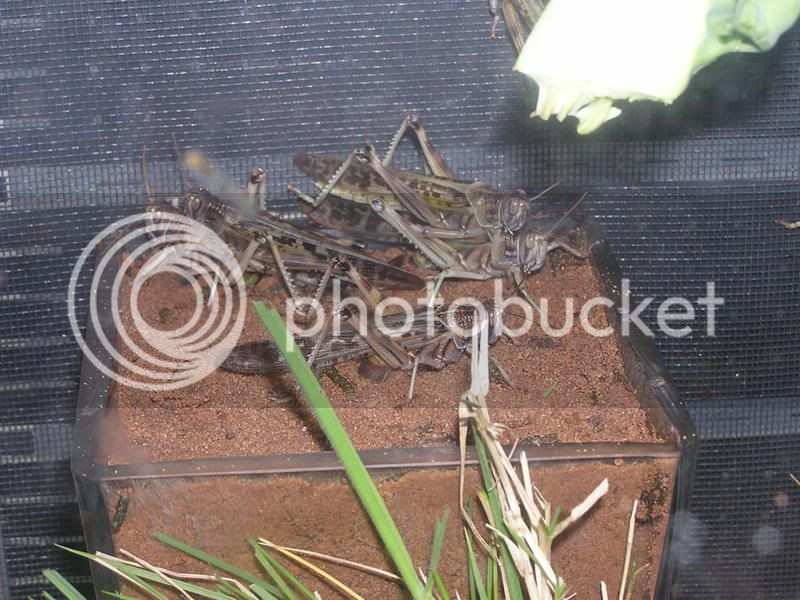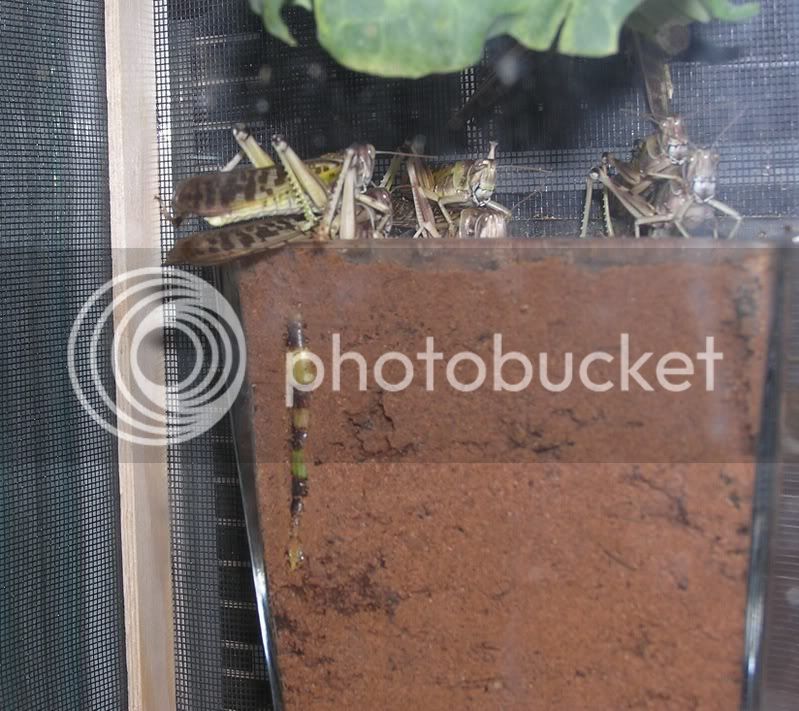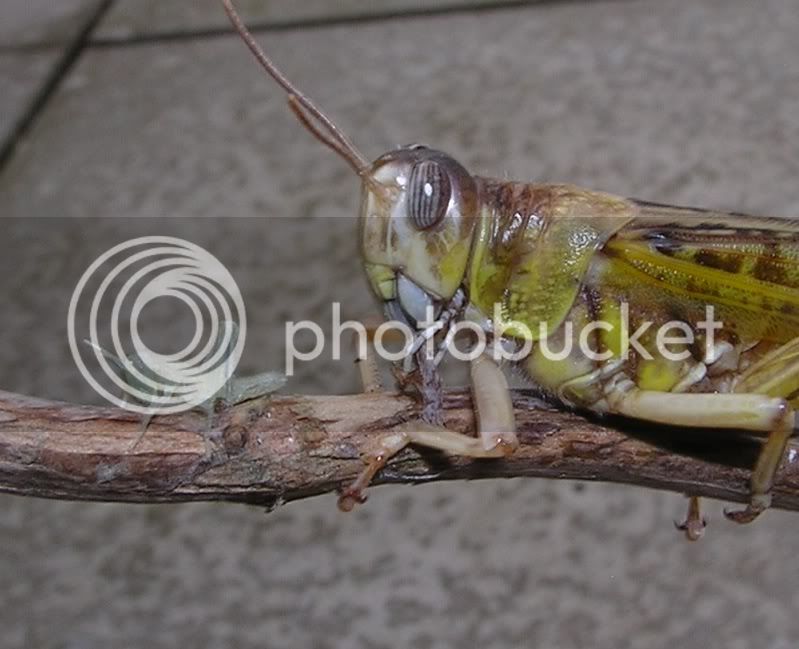nympho
Well-known member
hi. looking for advice from someone who keeps locusts. my colony of 25 adult desert locusts have matured at last and theres been quite a bit of mating going on, but the mated females are showing no interested in the big vase of damp sand i provided. i thought they were supposed to lay their eggs straight after mating but they are all still crowding at the top of the cage by the lamp and not going near the sand. it is very hot in the cage -at least 30 c (with a 60w lamp and big heat mat - the sand is resting against the hm so should be warm too) and they have plenty of fresh grass and cabbage which they are eating well. arnt they supposed to go and look for somewhere to lay eggs now or do you have to force them to stay on the sand by putting a container over them, or even direct a lamp on the sand to surface warm it (its currently pointing sideways not downwards)
also what temp does incubation have to be at. does it HAVE to be 25c plus or will development happen at lower temps (but slower) or just stop completely
btw do locusts stridulate like other grasshoppers. i read they dont but some of them occasionally rapidly beat their wings for one second and then imediately rub one tibia against the end of the wing a few times. doesnt seem to have a purpose otherwise but no females respond as far as i can tell and they dont try and mate after doing it. cheers
also what temp does incubation have to be at. does it HAVE to be 25c plus or will development happen at lower temps (but slower) or just stop completely
btw do locusts stridulate like other grasshoppers. i read they dont but some of them occasionally rapidly beat their wings for one second and then imediately rub one tibia against the end of the wing a few times. doesnt seem to have a purpose otherwise but no females respond as far as i can tell and they dont try and mate after doing it. cheers















































